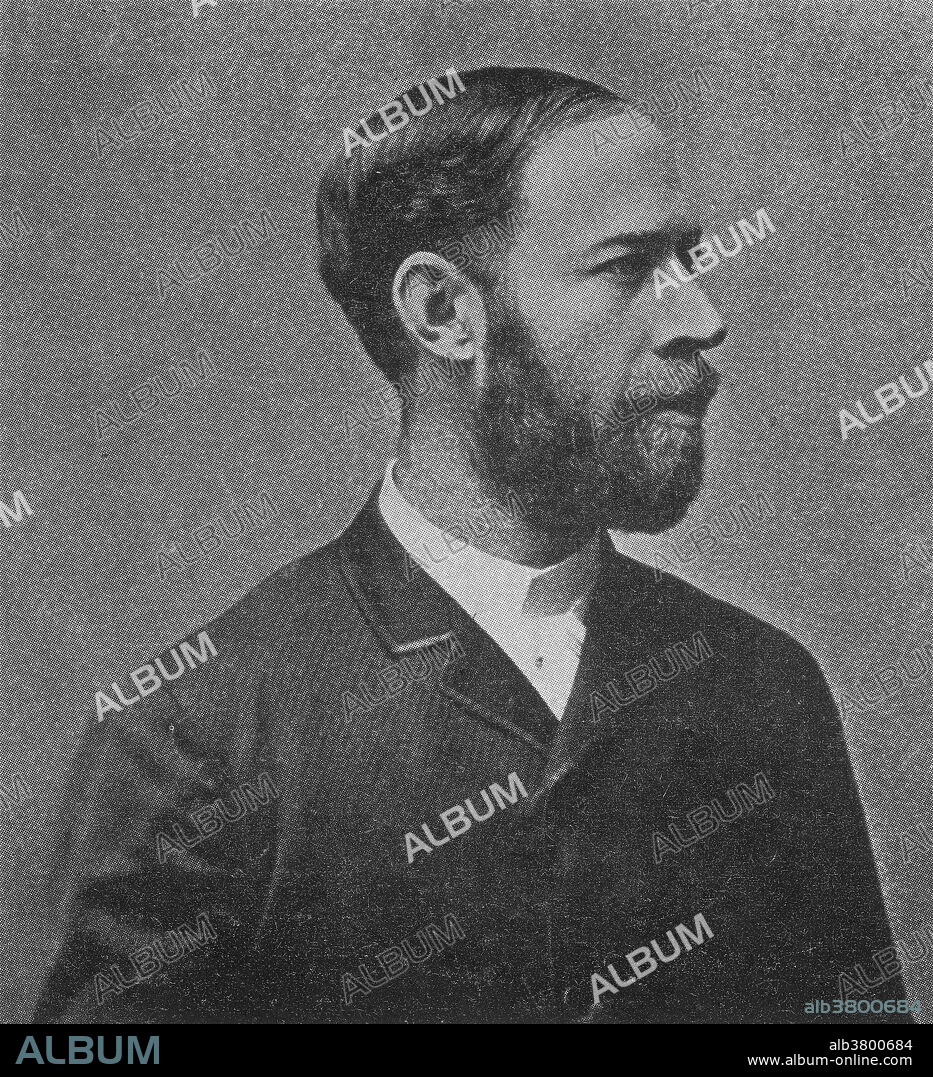alb3800684
Heinrich Rudolf Hertz, German Physicist

|
Añadir a otro lightbox |
|
Añadir a otro lightbox |



¿Ya tienes cuenta? Iniciar sesión
¿No tienes cuenta? Regístrate
Compra esta imagen

Título:
Heinrich Rudolf Hertz, German Physicist
Descripción:
Ver traducción automática
Heinrich Rudolf Hertz (February 22, 1857 - January 1, 1894) was German physicist and discoverer of radio waves. Hertz studied at Berlin, gaining his PhD in 1880. He then moved to Kiel, where he started investigations in electromagnetism. He used Maxwell's theories to construct an oscillating electrical circuit with a spark gap and proved the existence of radio waves in the late 1880s. He used two rods to serve as a receiver and a spark gap as the receiving antennae. Where the waves were picked up, a spark would jump. Hertz showed in his experiments that these signals possessed all of the properties of electromagnetic waves. With this oscillator, Hertz solved two problems. First, timing Maxwell's waves. He had demonstrated, in the concrete, what Maxwell had only theorized - that the velocity of radio waves was equal to the velocity of light (this proved that radio waves were a form of light). Second, Hertz found out how to make the electric and magnetic fields detach themselves from wires and go free as Maxwell's waves. He died from blood poisoning at the age of 36 while a professor of physics at Bonn.
Crédito:
Album / Science Source / New York Public Library
Autorizaciones:
Modelo: No - Propiedad: No
¿Preguntas relacionadas con los derechos?
¿Preguntas relacionadas con los derechos?
Tamaño imagen:
3125 x 3431 px | 30.7 MB
Tamaño impresión:
26.5 x 29.0 cm | 10.4 x 11.4 in (300 dpi)
Palabras clave:
1857 • 1894 • ALEMAN • BLANCO Y NEGRO • CIENCIA • ELECTROMAGNETISMO • EUROPEO • FAMOSO • FIGURA • FÍSICA (CIENCIA) • FÍSICO (CIENTIFICO) • FOTO • FOTOGRAFIA • GENTE • HISTORIA • HISTORICO • HOMBRE • HOMBRES • IMPORTANTE • MASCULINO • ONDAS DE RADIO • ONDAS ELECTROMAGNÉTICAS • PERSONA • PERSONALIDAD • PERSONALIDADES • PROFESOR UNIVERSITARIO • PROFESOR • RETRATO DE HOMBRE • SIGLO XIX
 Pinterest
Pinterest Twitter
Twitter Facebook
Facebook Copiar enlace
Copiar enlace Email
Email
